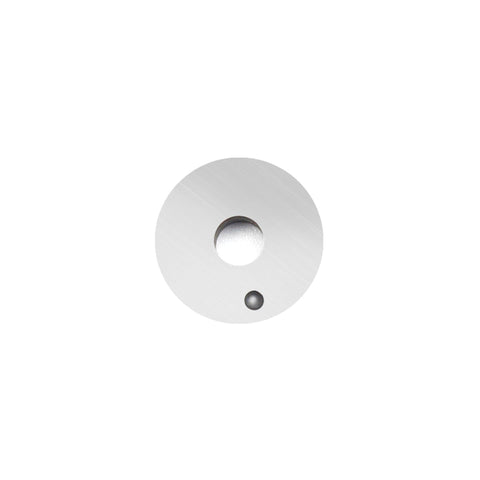Carbide Cutting Tools: Unpacking Their Advantages and Disadvantages
Carbide cutting tools have gained immense popularity in machining and woodworking due to their exceptional performance and durability. Made primarily from tungsten carbide, these tools offer a blend of hardness and resilience that makes them suitable for a wide range of materials, from metals to plastics. However, like any tool, carbide cutting tools come with both advantages and disadvantages that users must consider to make informed decisions.
One of the most significant advantages of carbide cutting tools is their remarkable hardness. Carbide ranks highly on the Mohs scale of mineral hardness, making it far superior to traditional high-speed steel (HSS) tools. This hardness translates into longer tool life, allowing carbide cutting tools to maintain their sharpness and effectiveness over extended periods. For industries that rely on high-volume production, this longevity can lead to substantial cost savings by reducing the frequency of tool changes and sharpening.
Another notable benefit is the thermal resistance of carbide cutting tools. These tools can withstand the high temperatures generated during machining without losing their cutting edge or structural integrity. This property is particularly advantageous when working with tougher materials, as it enables operators to maintain consistent cutting speeds and feeds. As a result, the machining process becomes more efficient, yielding better surface finishes and reducing the risk of tool failure due to overheating.
Carbide cutting tools also excel in producing high-quality finishes. Their sharp edges allow for clean, precise cuts that minimize the need for additional finishing processes. This capability is particularly beneficial in woodworking, where a smooth surface is often essential for aesthetic appeal. By using carbide tools, craftsmen can achieve a polished look straight from the machine, saving time and labor costs associated with sanding and refinishing.
In addition to their cutting capabilities, carbide tools are incredibly versatile. They come in various shapes, sizes, and designs tailored for specific applications, including turning, milling, and drilling. This diversity allows users to select the right tool for the job, improving both the efficiency and quality of their work. The adaptability of carbide cutting tools makes them suitable for a wide range of materials, from soft woods to hard metals, enhancing their utility in various industries.
Despite these advantages, carbide cutting tools also have their drawbacks. One of the primary disadvantages is their higher initial cost compared to HSS tools. While the investment in carbide tools often pays off in terms of longevity and efficiency, the upfront expense can be a barrier for smaller shops or hobbyists with limited budgets. This higher price point necessitates careful consideration of the expected usage and workload to determine if carbide tools are the right choice.
Another significant concern is brittleness. While carbide's hardness is a major asset, it also makes the material more prone to chipping or breaking under certain conditions. If improperly handled or subjected to excessive forces, carbide cutting tools can fracture, leading to costly replacements and potential project delays. Users must be mindful of their handling and operating techniques to avoid damaging these tools, which can limit their use in some high-stress applications.
Additionally, carbide tools require precise operating conditions. They perform best at specific speeds and feeds, and deviating from these parameters can lead to suboptimal results or premature wear. This demand for careful setup can be a disadvantage for novice users who may not have the experience to fine-tune their machining processes. In contrast, HSS tools are generally more forgiving of variations in operating conditions, making them easier for beginners to work with.
Maintenance and care for carbide cutting tools can also present challenges. While they require less frequent sharpening, when they do need attention, the process can be more complex than with HSS tools. Specialized equipment and techniques are often necessary to properly sharpen carbide, which can be a drawback for small shops without access to advanced sharpening tools. This requirement for additional maintenance expertise can add to the overall cost of ownership.
Carbide cutting tools also have limitations when it comes to specific applications. For example, while they excel in high-speed machining and materials with high hardness, they may not be the best choice for softer materials or applications requiring significant impact resistance. In such cases, using HSS tools might be more appropriate, as they are less likely to chip or break when subjected to shock loading. This situational effectiveness can influence a user's choice of tools depending on the materials and conditions they frequently encounter.
Ultimately, the decision to use carbide cutting tools should be based on a careful evaluation of both their advantages and disadvantages. For industries and individuals requiring high precision, extended tool life, and superior finishes, carbide cutting tools offer undeniable benefits that can enhance productivity and quality. However, the higher initial cost, brittleness, and specific maintenance needs must also be considered, especially for those new to machining or working within tighter budgets.
In conclusion, carbide cutting tools are a powerful ally for those engaged in machining and woodworking. Their remarkable hardness, thermal resistance, and ability to produce fine finishes make them an attractive option for many applications. However, the higher upfront investment, brittleness, and specific operating conditions present challenges that users must navigate. By weighing these factors carefully, craftsmen and machinists can make informed decisions that optimize their tool selection and ultimately lead to more successful projects.



